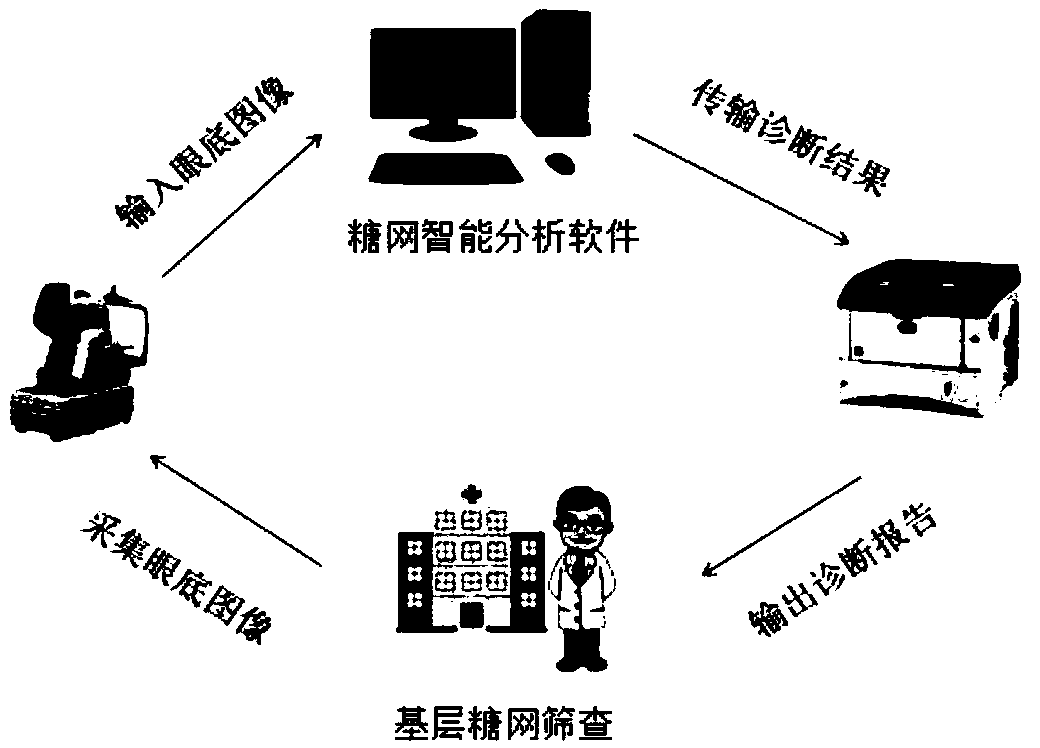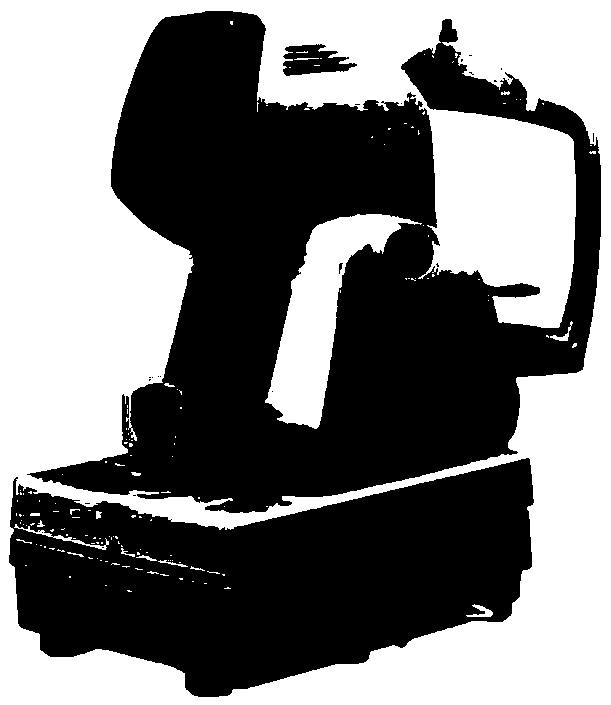System for screening diabetic retinopathy
A technology for retinopathy and diabetes, which is applied in the system field of diabetic retinopathy screening, can solve the problems of low accuracy and no one has manufactured equipment, and achieves the goal of avoiding diagnostic errors, improving clinical application prospects and saving medical costs. Effect
- Summary
- Abstract
- Description
- Claims
- Application Information
AI Technical Summary
Problems solved by technology
Method used
Image
Examples
Embodiment 1
[0034] like figure 1 As shown, in this embodiment, the screening system includes a color fundus camera, image processing and screening equipment (it can be implemented by a computer equipped with sugar network intelligent analysis software, and can also be implemented by a dedicated processor) and Diagnostic report printer. Images collected by other hospitals or primary screening units can also be transmitted to image processing and screening equipment.
[0035] figure 2 A schematic structural view of the color fundus camera used in this embodiment is shown; image 3 A schematic structural diagram of the diagnostic report printer used in this embodiment is shown. The color fundus camera is used to obtain the patient's color fundus image, which is operated by a professional doctor and transmitted to the fixed path of the computer.
[0036] The collected images are directly or indirectly transmitted to the image processing and screening equipment, which performs image proce...
Embodiment 2
[0051] In this embodiment, the screening system includes a fundus image receiver, a computer (which is installed with sugar net intelligent analysis software) and a diagnostic report display device.
[0052] In this embodiment, the fundus image receiver remotely receives fundus images sent by other non-local fundus cameras. The computer includes a processor and a memory, and sugar net intelligent analysis software is installed in the computer.
[0053] Sugar network intelligent analysis software can execute Figure 4 The individual process steps shown in . As shown in the figure, the fundus image obtained by a remote fundus camera or other equipment is first received, and then image preprocessing is performed.
[0054] Next, image quality correction, blood vessel segmentation, optic disc positioning, red lesion extraction, and brightness lesion extraction are performed. Then, use the characteristic information such as blood vessels, optic discs, and lesions obtained in the ...
Embodiment 3
[0057] In this embodiment, the structure of the system is the same as that in Embodiment 1, except that the optic disc positioning module adopts a special positioning method.
[0058] Specifically, in this embodiment, the optic disc positioning module proposes for the first time a method based on the human visual attention model to locate the optic disc by means of some advances in computational neuroscience. The principle is as follows: First, multiple feature maps of different scales are generated. Specifically, after image preprocessing, through Gaussian filtering and continuous downsampling, Gaussian pyramids of multiple different scales are extracted from the image. "Operation calculation. Generate brightness, color, and orientation feature maps, such as Figure 7 Shown: Among them, (a) is the brightness saliency map, (b) is the color saliency map, (c) is the direction saliency map.
[0059] Based on the 3 feature maps, establish 3 feature saliency descriptions and ...
PUM
 Login to View More
Login to View More Abstract
Description
Claims
Application Information
 Login to View More
Login to View More - R&D
- Intellectual Property
- Life Sciences
- Materials
- Tech Scout
- Unparalleled Data Quality
- Higher Quality Content
- 60% Fewer Hallucinations
Browse by: Latest US Patents, China's latest patents, Technical Efficacy Thesaurus, Application Domain, Technology Topic, Popular Technical Reports.
© 2025 PatSnap. All rights reserved.Legal|Privacy policy|Modern Slavery Act Transparency Statement|Sitemap|About US| Contact US: help@patsnap.com



